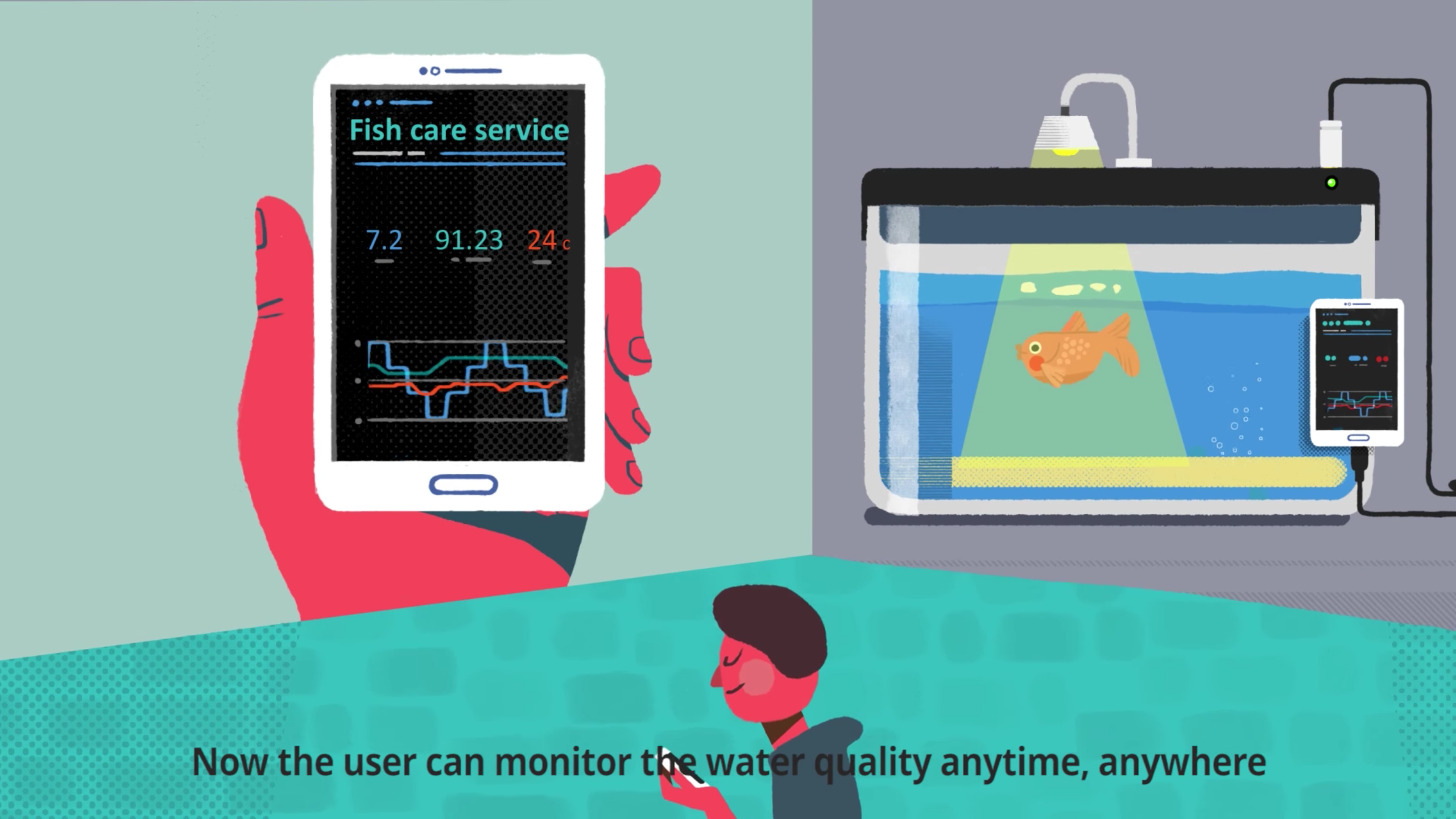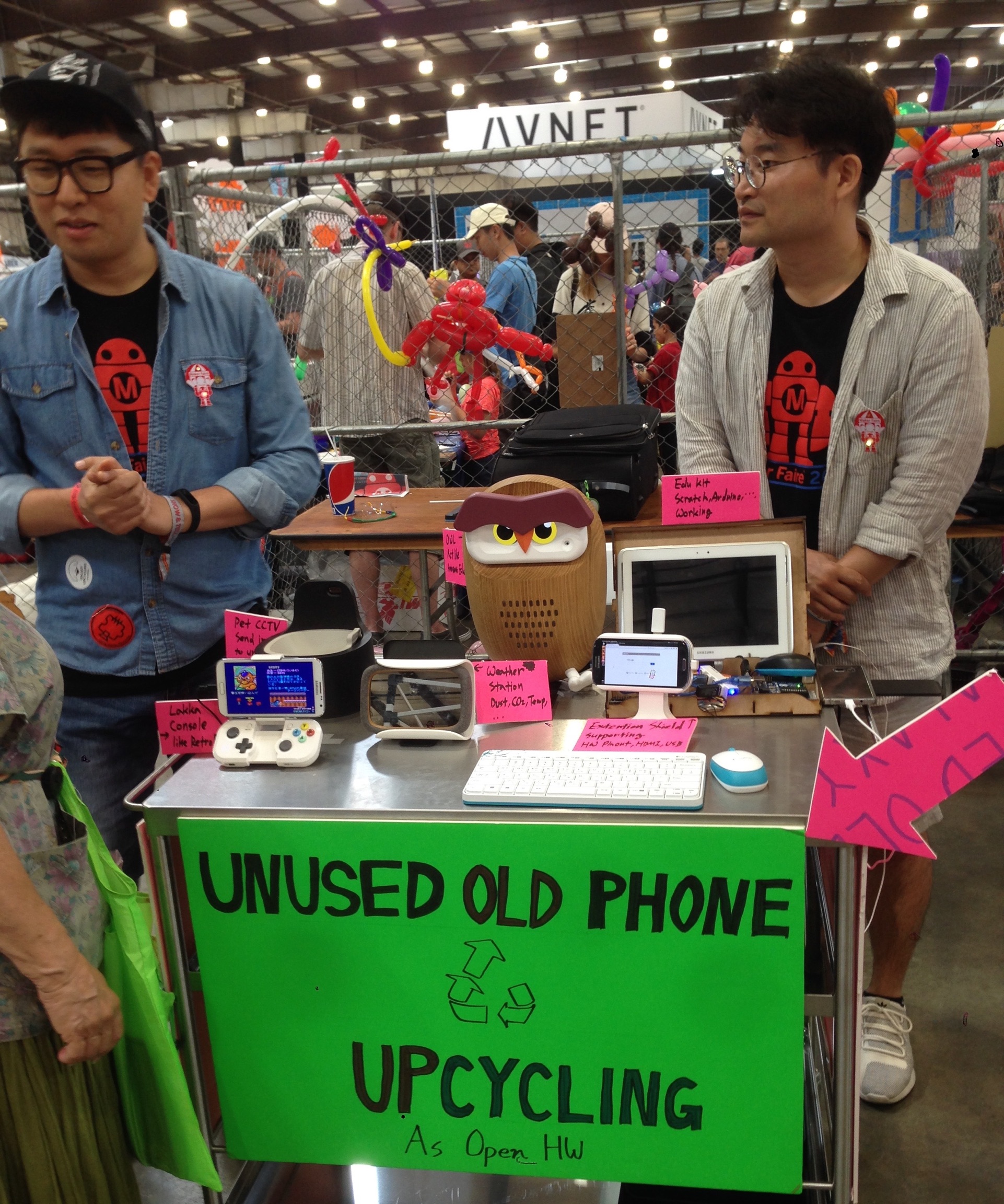A small team of Samsung engineers showed us something exciting four years ago. It was novel, revolutionary, and not what you’d expect from the smartphone king. They wanted our help to make it real.
It wasn’t a folding phone, a robot, or a VR kit—this invention didn’t even have a price. It was a marketplace of clever uses for old, easily unlocked Samsung phones. This was exactly the kind of lifespan-prologinging idea that we love. We were instantly sold.
“There is another way to create even more value” than recycling, Samsung said in a video at the time. “It’s called upcycling.” With code and creativity, upcycling could turn a Galaxy S5 into a smart fish tank monitor, a controller for all your smart home devices, a weather station, a nanny cam, or lots more. Upcycling not only kept your old phone from being shredded or stuck in junk-drawer purgatory, it could keep you from buying more single-purpose devices. It was a smart way to reduce our collective upgrade guilt.
We were so excited, in fact, that when Samsung asked us to help launch the product in the fall of 2017, we jumped at the chance. You’ll see iFixit’s name and logo all over Samsung’s original Galaxy Upcycling materials. Samsung, a company without much of a public environmental message, was tossing around big ideas born at a grassroots level. This was something new. We were jazzed, and after validating the concept with working code in our labs, lent our name and credibility to the effort.
But sometimes well-intentioned projects get muzzled inside giant companies. The version of Galaxy Upcycling that finally launched, four years later, is nearly unrecognizable. It makes Samsung seem like a company that hit its head and lost all memory of an idea that would really make a difference for their customers and the planet.
The original Upcycling announcement had huge potential. The purpose was twofold: unlock phones’ bootloaders—which would have incidentally assisted other reuse projects like LineageOS—and foster an open source marketplace of applications for makers. You could run any operating system you wanted. It could have made a real dent in the huge and ever-growing e-waste problem by giving older Samsung devices some value (no small feat, that). It was a heck of a lot more interesting than the usual high-level pledges from device makers about carbon offsets and energy numbers.

But that version of Galaxy Upcycling went nowhere. These days, Samsung is beta-testing an “expansion” of “Upcycling at Home,” despite Upcycling never actually shipping. The program’s backwards compatibility now only covers the three-year-old Galaxy S9, which is not really an “old” phone about to be tossed. It’s just the last phone before Samsung got serious about software updates.
The new version of Galaxy Upcycling at Home turns the high-powered S9 (once sold as “The phone. Reimagined.”) into a single-purpose light or sound sensor inside the SmartThings smarthome system. That’s it; that’s the “upcycle.” So instead of an actually-old Galaxy becoming an automatic pet feeder, full-fledged Linux computer, retro game console, a wooden-owl Alexa alternative, or anything else that you or a community of hackers can dream of, the new program will take a phone you can still sell for $160 and turn it into something like a $30 sensor.


How did we get here? Our Chief Tool Officer Eric Essen met a group of enthusiastic upcycling developers in May 2017 at the Bay Area Maker Faire. After some encouraging exchanges (and their revealing themselves as working with Samsung), CEO Kyle Wiens was invited to visit Samsung HQ in Suwon, South Korea, where the team showed him working prototypes and laid out their vision. He was excited enough that he agreed to help announce the product on stage at Samsung’s annual developer event.
We tested an early version of the Upcycling software at our offices. It was unpolished, but it worked. We expected to see a finished product soon after.
If the program had shipped, we were planning to gear up and offer more Samsung batteries and publish more guides on fixing up older Samsung devices. We have an ambition to see more people fix up things they own and make use of them. And we were enthused about a tectonic shift in attitude by Samsung toward e-waste, a matter on which the smartphone behemoth has mostly kept quiet.
Instead, we heard crickets. The actual software was never posted. The Samsung team eventually stopped returning our emails. Friends inside the company told us that leadership wasn’t excited about a project that didn’t have a clear product tie-in or revenue plan.

We wish Samsung could get excited about a commitment to their products beyond shipping more of them. As Samsung was ramping up its original, ambitious Upcycling program, its Galaxy phones were sliding down our repairability index. Since then, Galaxy phones have become more fragile and glue-caked, requiring a near-total teardown for many common repairs. Replacing the battery or screen on a Galaxy phone these days is a badge of honor among new phone fixers—it doesn’t get much more annoying.
Don’t just take it from us, the softly spurned upcycling partner. Ron Amadeo wonders at Ars Technica why Samsung’s new Upcycling program makes their feature-packed phones do less than a Raspberry Pi that costs $40, instead of what Upcycling would have originally done:
It would also be nice if Samsung just threw open the doors to its end-of-life hardware and unlocked the bootloaders, allowing users to wipe out the old abandoned OSes and apps on these devices and install some newer, more appropriate software. Running a full smartphone OS on a single-use device is wildly overkill, and you could have better performance and longer battery life (if you’re running on the battery) if you wiped out most of the default software.
Samsung, the company that once asked Note 9 owners to buy a Note 10 via notification ads, has recently shown a commitment to post-purchase support, with more OS and security updates. Why not cover the other half of the equation? Samsung, like every manufacturer, should set their old phones free. Open up their bootloaders. Let people use their cameras, sensors, antennas, and screens for all kinds of purposes, using whatever software people can dream up.
The world needs fun, exciting, and money-saving ways to reuse older phones, not a second-rate tie-in to yet another branded internet-of-things ecosystem.
We reached out to Samsung for comment on this post, as well as with questions about the fate of the original Galaxy Upcycling program. We will update this post should we hear back.








14 opmerkingen
Samsung (and their affiliates) have worse things on their consciousness. Here’s a short story:
I have a Galaxy Watch. The original, 46mm. I’ve used it daily for almost 3 years. A few days ago I noticed the heart-rate sensor stopped working, then the watch started warm up (very) and lost charge 100->0 in 3 hours. So, as the fix-friendly guy I am, I take it to Samsung’s local subsidiary for repair. When I turned it in, I notice that the back glass is cracked. After almost a week, they say “there’s moisture, not fixable”. So, they won’t fix? Fine, can I buy the back plate and fix myself? No. “We don’t sell spares!”. Ended up disconnecting the HRM (watch works 100% correctly without it) and ordered a new back plate from the UK for MORE money than the local repair would have cost me. They WANT you to throw away your old phone. They WANT you to adhere to Apple-mentality (consume-dispose-rinse-repeat). Back plate arrives tomorrow, and then I’ll have saved the environment the footprint of 1 watch. I 1 - Samsung 0.
thor - Antwoord
Great story and are so right companys now days don't care
About repairing they want that money
jhoneycutt323 -
Frontier watch. but different story. My battery would no longer hold a charge, and Samsung wanted a crazy price to fix a perfectly fine watch. The fix it price, with no guarantees that it would work, just happened to be the same cost as a new watch. What!? Less than $20 later and waiting for 5 days for delivery of a battery and the tools needed to fix it, and my old watch is as good as new, including no scratches or nothing. Upcycle is a joke. I have a perfectly fine Note 5 just sitting there doing nothing because it’s too old for Upcycle.
Thanks but NoThanks -
If you really knew anything you’d know Apple is nothing close to “consume-dispose and repeat”… Their old phones are still used by many people, especially outside of America. To the rest of your post, you’re dead on. Just don’t let being a fanboy cloud facts.
h e -
This is why we need to still support our modders, hackers, and devs!
Suki-san - Antwoord